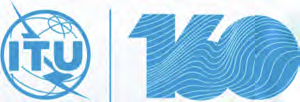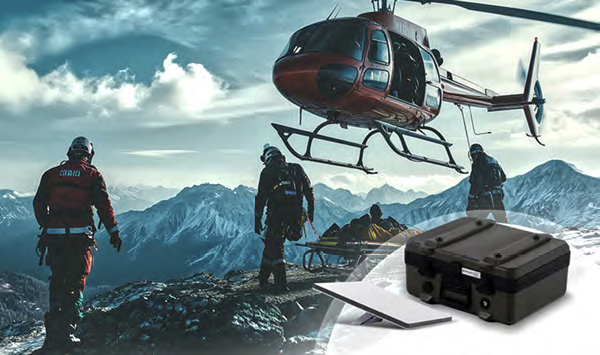Mark Hawkins, IEC Telecom
When disaster strikes— be it natural disaster, conflict or infrastructure disruption—reestablishing communications is a core priority for relief teams.

The rapid evolution of satellite connectivity, particularly LEO constellations, is transforming the way aid teams establish and use their communication structures in the field.

The increasing prevalence of climate-related disasters underscores the urgent need for robust communication solutions. According to the United Nations Office for Disaster Risk Reduction (UNDRR), the frequency of natural disasters has surged by 83% over the past two decades. From floods to fires, hurricanes to landslides, these events require immediate and coordinated action. The International Telecommunications Union (ITU) reports that more than 75% of first responders identify dependable connectivity as the single most critical factor for operational efficiency. Reflecting this demand, the market for mobile satellite services in disaster management is projected to grow at a compound annual growth rate (CAGR) of 8.5% through 2030.

Mark Hawkins
“First responders typically operate in areas where reliable cellular connectivity is unavailable. These include remote communities—often the first victims of disasters due to weak infrastructure—where GSM coverage is limited or non-existent. This is also true for urban environments, where telecom infrastructure may be severely damaged, cutting off communication channels. Satellite telecommunications remain the critical link between humanitarian missions and coordination centers,” said Mark Hawkins, Senior Humanitarian Technology Consultant with IEC Telecom Group.
With the advent of reliable, high-speed, low-latency, and cost-effective connectivity enabled by LEO technology, communication in the field has evolved far beyond basic coordination and emergency calls. Aid agencies now have access to the full spectrum of digitalisation, including telemedicine, advanced tracking with multi-layered mapping, specialised applications, and more—right where it’s needed most.
When such a level of connectivity is deployed at the scale of a humanitarian mission, monitoring of active lines, credit limits, and consumption patterns is essential to ensure proper provisioning. This is particularly important in light of recent cuts in NGO funding, forcing humanitarian agencies to tighten budgets on all fronts.
Mark Hawkins added, “Enabling connectivity is just a part of the picture. In the areas of humanitarian action, access to the internet is a very scarce and seductive resource, to ensure purposeful consumption, particularly in current days where every line of the operational budget is severely monitored, network management solutions gain paramount importance.”
IEC Telecom, with moer than 30 years of experience supporting the humanitarian sector, is uniquely positioned to address these challenges. As an authorized reseller of Starlink, IEC Telecom integrates advanced satellite technology with proprietary network management tools, delivering tailored solutions that empower emergency response teams to operate effectively in high-stakes scenarios.

The firm’s latest solution, RDK 2.0, a next-generation Rapid Deployment Kit, has been designed to meet the specific requirements of aid and rescue missions. This portable, carry-on-sized case features the Starlink Mini, which can seamlessly support up to 128 devices over Wi-Fi 5 technology. Two power banks enable off-grid operation, a crucial feature in the critical first hours of any operation. Importantly, when connected to OptiView, IEC Telecom’s network management ecosystem, each kit can be managed remotely.
 As such, each RDK 2.0 can be activated or deactivated as the situation demands. In addition, IEC Telcom offers the possibility of reallocating credits between kits to maximise airtime usage within the subscription period, ensuring no megabyte goes to waste.
As such, each RDK 2.0 can be activated or deactivated as the situation demands. In addition, IEC Telcom offers the possibility of reallocating credits between kits to maximise airtime usage within the subscription period, ensuring no megabyte goes to waste.
“One of the key trends in the humanitarian sector today is so-called ‘localisation’, whereby international aid agencies shorten their operational presence in third countries while handing over execution to local NGOs. In such a scenario, transparency and reportability are key,” Mark said. “With network management tools, HQ preserves direct control of all active links and can assess consumption partners, reallocate credits and adjust provisioning on reliable source data accessible anytime via a user-friendly online portal.
 “Digitalization is not only about the empowerment which results from new opportunities unlocked with high-speed data access, nor only remote control. It’s also about the enablement of new cooperation models, which, due to the ongoing transformations, the humanitarian sector is desperate to attain.”
“Digitalization is not only about the empowerment which results from new opportunities unlocked with high-speed data access, nor only remote control. It’s also about the enablement of new cooperation models, which, due to the ongoing transformations, the humanitarian sector is desperate to attain.”
The world today is restless and unpredictable and humanitarian agencies have never been more in demand nor as vulnerable. The ability to establish fast, reliable communication remains a critical necessity for those operating in hostile or insecure environments.
 To ensure safety, operational efficiency and agility of humanitarian missions, NGOs have no alternative but to embrace technological advancements which means that the role of managed data-driven solutions will only continue to grow.
To ensure safety, operational efficiency and agility of humanitarian missions, NGOs have no alternative but to embrace technological advancements which means that the role of managed data-driven solutions will only continue to grow.
The future of humanitarian aid is digital, and the time to prepare is now.
iec-telecom

